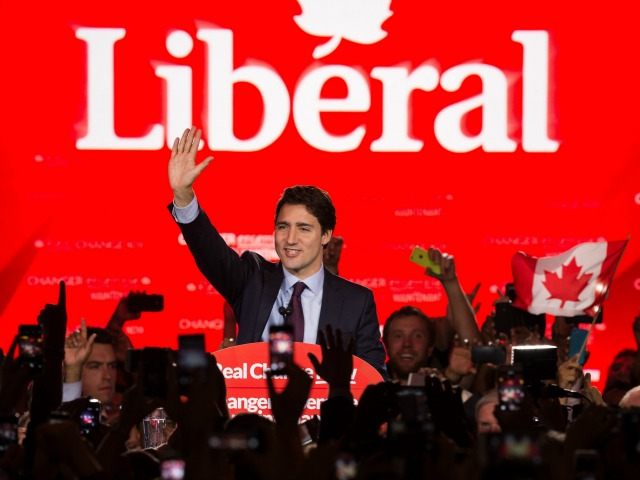Canada’s Anti-Wall Street Election
On October 19th, Canada had a ground shaking election following a 78 day election campaign (their longest election campaign on record). The Liberal Party was in third place at the beginning of the election, behind the governing Conservative Party and the official opposition, the New Democratic Party. During the short campaign, Liberal Party leader Justin Trudeau was able to take his party from a distant third place to winning a landslide victory. The Liberals now have a large majority in the Canadian parliament and Canada has a Liberal prime minister after nearly a decade of Conservative rule.
This election shocked political analysts, both within Canada and around the world. It has been the accepted dogma that politicians need to toe the pro-business line in order to be electable. In this case, the Conservative party, with its strong ties to Canada’s oil industry and the financial sector has been the natural governing party for years. Even the New Democratic Party, historically a democratic socialist party, spent the campaign talking about balanced budgets. Canadian pundits were expecting a mostly two way race between the Conservatives and New Democrats, with the Liberals remaining an afterthought.
Instead, defying expectations, the Liberals surged ahead in the polls and won a landslide victory. What was the secret? In the words of Justin Trudeau, “Sunny ways, my friends, sunny ways, this is what positive politics can do.” Indeed, in contrast to his opponents’ stream of attack ads and fearmongering, Mr. Trudeau’s Liberal Party ran a campaign of positive messaging, telling Canadians the great things they would be able to accomplish together.
Perhaps even more important than the positivity, however, was the fact that Mr. Trudeau explained exactly how they would accomplish great things – by increasing taxes on the richest Canadians, cutting taxes on the middle class, and investing in creating jobs. He said, “We can do more for the people who need it, by doing less for the people who don’t.”
Canada has a reputation for being notoriously liberal, so it might seem like this is something that would work in Canada but not in a country like ours. However, despite its reputation, Canada is a country that has been governed by Stephen Harper, the Conservative ally of George W. Bush, since 2006, while America twice elected our most left wing President since FDR, Barack Obama. The difference here is that Justin Trudeau’s message, of fair taxation, of investing in growth, and of taking power back from the wealthy motivated huge numbers of Canadians to head to the polls, many for the first time.
In fact, the number of Canadians who voted in this election was up 20% from the low of the 2008 election, and nearly all of this increase in votes went to Justin Trudeau’s Liberal Party. Like the United States, Canada generally has a tragically low voter turnout because many potential voters are disillusioned with the system. Trudeau’s promise to make life in his country more fair and to take power back from the rich brought those voters out in droves.
Others have suggested the Democratic Party could learn a thing or two from Mr. Trudeau’s performance, but there is no possibility that a serious Democratic candidate could make these kinds of promises, let alone follow through with them. In the United States, it would only be possible for an independent candidate to make these kinds of changes to the American system. All we need is a message of change and enough exposure, and we will break Americans out of their voter apathy and change this country for the better. Please join me by spreading the message and voting to elect Art Drew for President in 2016!




